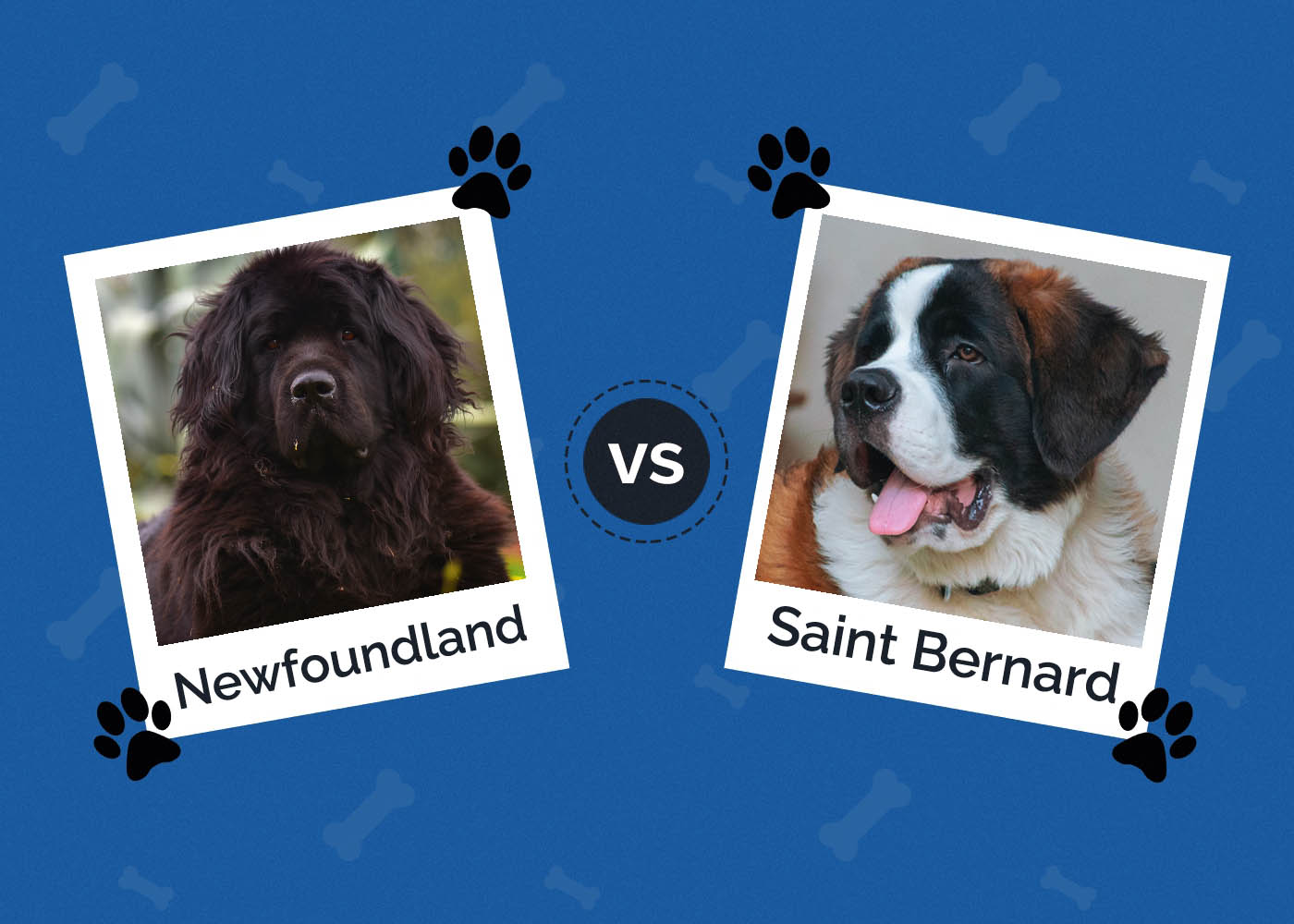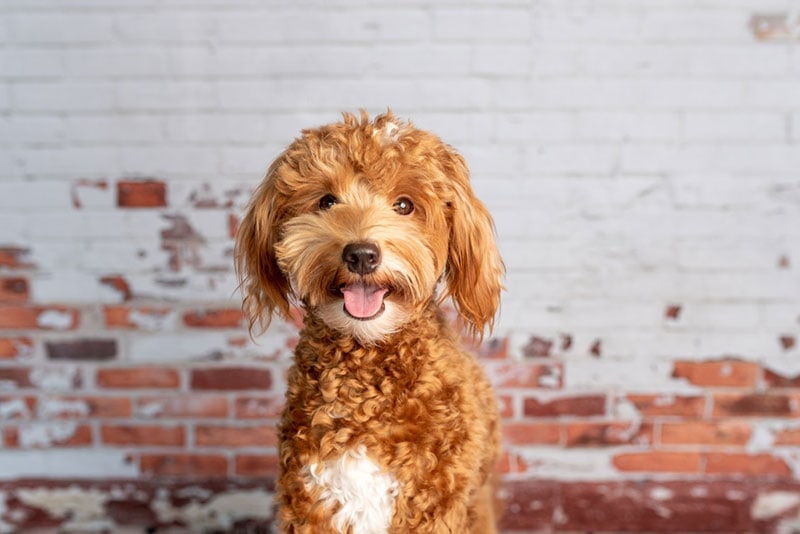Why Does My Dog Follow Me Everywhere? 5 Vet-Verified Reasons

Updated on
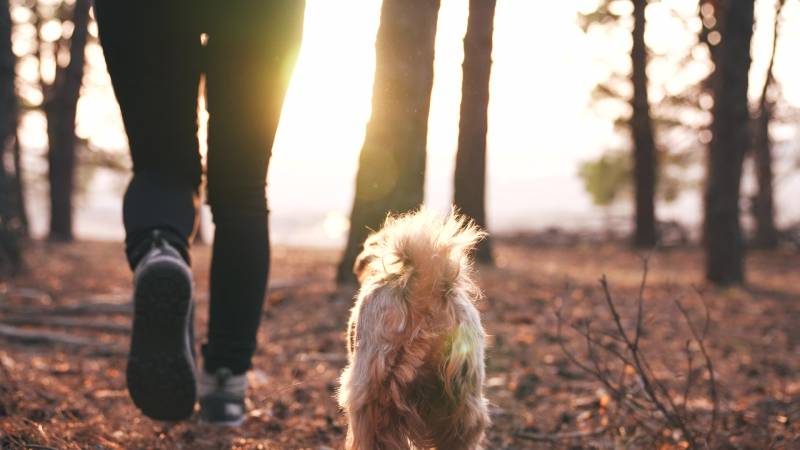
Is your dog your shadow? Do they follow you into the bathroom, the kitchen, and the bedroom, no matter what you’re doing? Dogs can be clingy for a lot of reasons, including their instincts and breeding, but sometimes, it can indicate mental or physical health problems.
Find out the five common reasons that dogs follow their owners around and when you should be concerned.
The 5 Reasons Your Dog Follows You Everywhere
1. They’re Bred to Follow
Some breeds were simply developed to be strongly attached to their owners in a healthy way. For example, hunting dogs like Labrador Retrievers and Bloodhounds, herding dogs like Australian Cattle Dogs and Border Collies, and all-purpose dogs like German Shepherds were bred to work side-by-side with humans while displaying enough independence to perform their jobs.
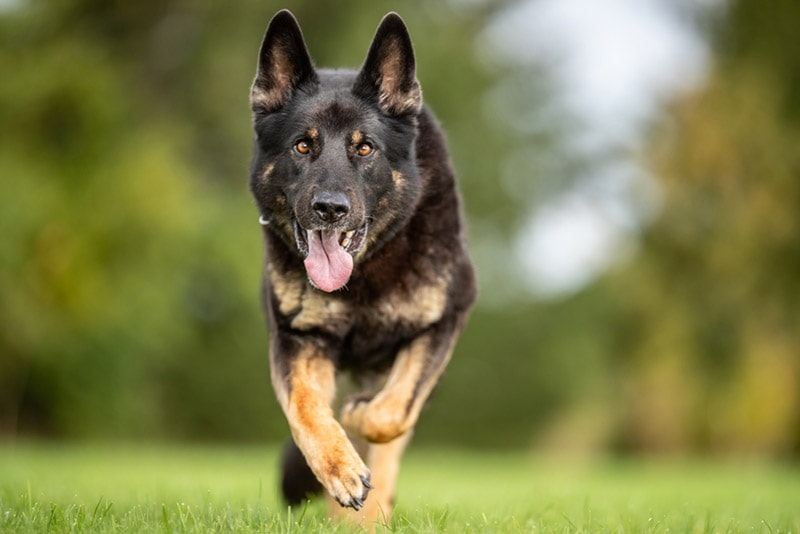
2. They’re Looking After the Leader
In many homes, a lot of the responsibility to care for a dog falls primarily on one person. That person is taking the dog for walks, feeding them, playing with them, and offering them treats or love. Naturally, that dog will then look to that person as their caregiver and follow them around to get what they need.
3. They’re Pack Animals
Dogs travel in packs. When they no longer have a canine pack, their human companions become the pack, and those instincts are redirected to their packmates—i.e., you. Just as they follow the other canine members of the pack, they follow you around to make sure they’re not missing anything.
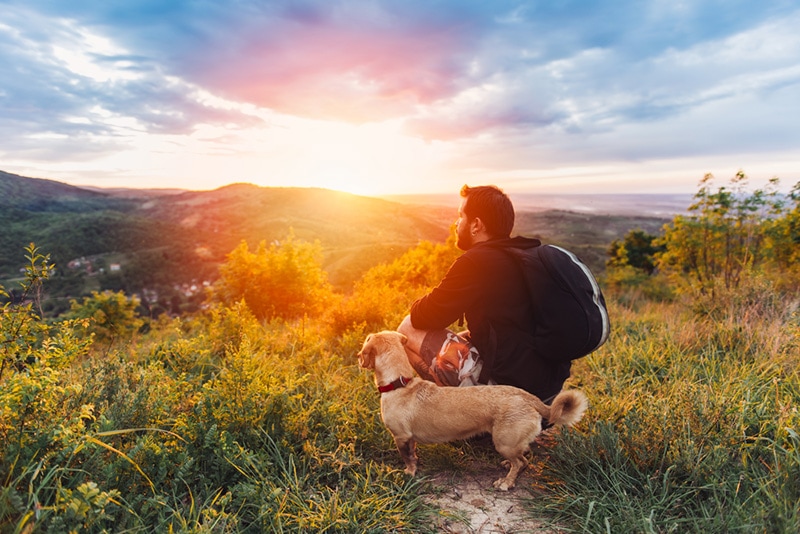
4. They’re Feeling Anxious
Some dogs become clingy if they’re nervous, scared, or not feeling well. This is especially true of rescue dogs that may have come from unstable or unhealthy environments where they may have been abandoned or developed separation anxiety. You may notice your dog gets clingy during obviously scary situations like fireworks, thunderstorms, or when new people come over.
Pay attention if your dog becomes clingy overnight, however. For example, older dogs that are losing their sight or hearing may become more anxious and dependent. Dogs that are in pain can also become clingier. Schedule an appointment with your vet if you suspect this is the case.
5. They Get Rewarded
Whether you like your dog following you or not, you probably reinforce the behavior without realizing it. If your dog is following you around, you’ll eventually talk to them, pet them, offer them a treat, or give them a bit of your food. They then learn that following you around can lead to good things.

What’s the Difference Between Attachment and Separation Anxiety?
A clingy dog, which may be called a “Velcro” dog, can have a healthy attachment. They prefer to be glued to you and follow you around, but they can be without you and display some independence.
Conversely, separation anxiety is an anxious behavior that causes your dog to panic if you’re away. It’s not just that they want to be with you; they may be terrified if you leave them. Sometimes, separation anxiety can become so severe that your dog destroys crates, doors, or furniture trying to get to you or injures themselves trying to escape.
Velcro dogs may be more likely to develop separation anxiety, but it doesn’t mean they will for sure, and virtually any dog can develop separation anxiety under the right circumstances. Separation anxiety gets harder to fix the longer it’s established, so it’s crucial to address it at the earliest signs.
Moderate to severe separation anxiety may require a veterinary behaviorist, but here are some tips to manage mild separation anxiety and prevent it from worsening:
- Enrich your dog with physical and mental exercise to tire them out and prevent boredom.
- Teach your dog the “place” command to stay in a crate or on a mat and learn to settle down on their own.
- Teach your dog recall and “away” commands to encourage them to be away from you for short periods.
- Give your dog a special toy or treat only for when you leave. Make sure it’s something they’re safe to have alone. Start by offering the treat and leaving for short periods—even 30 seconds at first—and coming back before your dog begins to panic. Gradually extend the time you spend away.
- Do not make a big fuss about leaving or returning home, and ignore any anxious or overexcited behavior; only pay attention to your pet after they calm down.
- Consult a professional trainer or veterinary behaviorist to nip separation anxiety in the bud.

Conclusion
While a little clinginess is okay, it’s important to understand why your dog feels the need to follow you around. If they’re just a Velcro dog, that’s fine, but your dog should be comfortable and secure on their own sometimes. Work on achieving a healthy balance between being by your side and settling down on their own.
See also:
- How to Use Guillotine Dog Nail Clippers: Vet-Approved Step-by-Step Guide
- Can Hamsters Eat Peas? Vet-Approved Feeding Facts
Featured Image Credit: maxim ibragimov, Shutterstock


